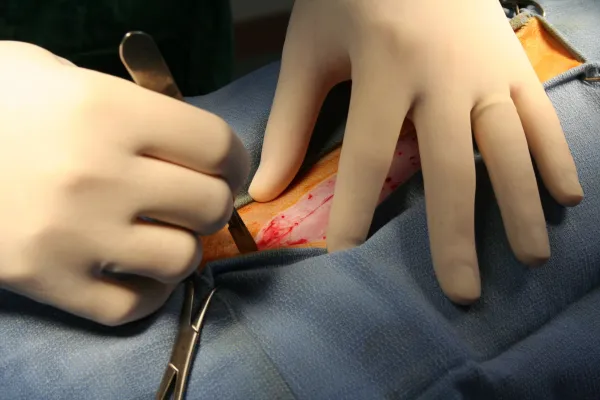4 Tips Create Clean ECMO Claims
Master cannula placement codes and more. If you have surgeons who are sometimes part of an extracorporeal membrane oxygenation (ECMO) team, we have expert guidance to help you avoid denials and make sure you capture the pay your practice deserves. Hint: Extracorporeal life support (ECLS) is the same as ECMO. The procedure allows compromised heart and/or lungs to rest by providing blood oxygenation and carbon dioxide clearance outside of the body. Patient blood is removed, treated, and returned to the body via cannula(e), or thin tube(s). Tip 1: Know Your Surgeon’s Role The ECMO team often involves multiple physicians and other healthcare providers, so you need to know what part of the service your surgeon provides. Per the CPT® guidelines, “Different physicians may insert the cannula(e) and initiate ECMO/ECLS, manage the ECMO/ECLS circuit, and decannulate the patient.” One physician may manage the circuit and patient-related issues like anticoagulation, and a different physician may manage the patient’s overall medical condition and underlying disorders. Supporting nonphysician personnel also work with ECMO/ECLS patients, such as ECMO/ECLS specialists, cardiac perfusionists, respiratory therapists, and specially trained nurses. General surgeon’s job: As part of an ECMO team, a common role your general surgeon might perform is inserting, repositioning, and removing the cannulae used in the procedure. “Surgeons often perform this work even if they aren’t treating the patient’s underlying condition or monitoring the ECMO therapy,” says Terri Brame Joy, MBA, CPC, COC, CGSC, CPC-I, national director of marketing and revenue management at FasPsych in Omaha, Nebr. Basics: Depending on patient needs, the physician may choose a veno-arterial (V-A) or veno-venous (V-V) treatment. In V-A ECMO/ECLS, the physician places one cannula in a large vein and places one cannula in a large artery. This method can support both the heart and lungs. For lung support only, the physician may choose V-V ECMO/ECLS involving one or two cannula(e). Tip 2: Grasp the Cannula-Code Breakdown Based on patient age and surgical approach, CPT® provides the following codes for ECMO cannula(e) placement, divided by age group: Birth to five years: Six years and older: Reposition: If the surgeon repositions cannulae at some point during the procedure, you might use one of the following codes, distinguished by age and approach: Birth to five years: Six years and older: Remove: Cannula removal codes also reflect patient age and approach, as follows: Birth to five years: Six years and older: Caution: If you’re reporting a cannula insertion, repositioning, or removal associated with ECMO/ECLS, you must use the codes from this section. “You should never report other cannula or catheter codes such as 36800-36815 (Insertion of cannula for hemodialysis, other purpose (separate procedure)…) for the ECMO cannula service,” Joy says. Tip 3: Understand Other Services Other providers in ECMO cases will perform work aside from the cannula procedures, and you should be familiar with those services even if you’re not coding for them directly. Initiation: The ECMO treatment begins with “initiation,” which involves deciding which device components are correct for the patient, as well as the blood flow, gas exchange, and those sorts of necessary parameters. The physician performing this service chooses between these codes: Daily management: For daily ECMO management, the physician oversees the patient’s care to manage blood flow and gas exchange, among other things. “The physician may document pump flow rate, assess pump settings, confirm gas line pop-off setting is appropriate for circuit size, assess cannula for correct placement and for evidence of bleeding, to name a few,” says Julie-Leah J. Harding, CPC, CPMA, CEMC, CCC, CRC, CPEDC, RMC, PCA, CCP, SCP-ED, CDIS, AHIMA-approved ICD-10 trainer and ambassador and director of revenue operations at Boston Children’s Hospital in Boston, Massachusetts. The following codes describe these services: Additional E/M: Note that daily overall patient management, including the treating the patient’s underlying condition, is a service distinct from ECMO that the performing provider may report using an E/M code. Tip 4: Beware Bundling Issues The CPT® ECMO guidelines give some direction about certain ECMO procedures that are bundled, meaning that you can’t report the services for the same patient on the same day. Insert/reposition: During the session that your surgeon reports a cannula placement code (33951-33956), you should not additionally report a cannula reposition code (33957-33964), even if the surgeon changes the cannula placement during that session. Initiate/reposition: Although you would expect to report a cannula insertion code on ECMO initiation day, CPT® instruction says that you should not report a cannula reposition code (33957-33964) on the same day as the ECMO initiation (33946-33947). Fluoroscopic guidance/reposition: If your surgeon uses fluoroscopic guidance during a cannula repositioning service, you should not separately report the imaging service, because it is included. Replacement restrictions: If your surgeon removes a cannula from a vessel and replaces it with a cannula in the same vessel, you can’t report the service using both a removal and an insertion code, according to CPT® instruction. Instead, you should report the replacement using just the appropriate insertion code from the range 33951-33956. On the other hand, if the surgeon removes a cannula from one vessel and places a new cannula in a different vessel, you can report both a removal code (33965-33986) and an insertion code (33951-33956). Management: Although general surgeons are less likely to be providing the ECMO initiation (33946, 33947) and ECMO daily management (33948, 33949) services, you should be aware that CPT® bundles those procedures.




